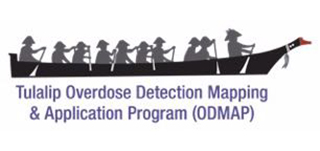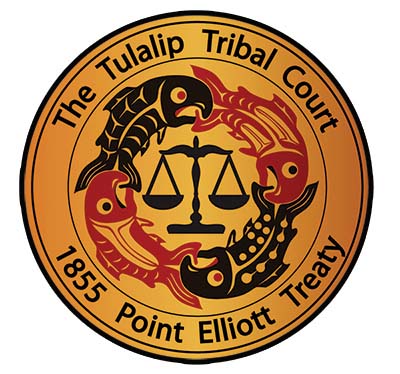
By Kalvin Valdillez, Tulalip News
“There are a lot of overdoses during bonus and Christmas time,” said ODMAP (Overdose Detection Mapping & Application Program) Outreach Specialist, Tashena Hill. “People are feeling sad because they can’t be with their families or they are reminded of family members who passed on. ODs really spike during this time of year, so it is very important for us to get this information out.”
As overdose rates continue to climb nationwide, the Tulalip Tribal Court is taking action in an attempt to address the opioid epidemic on the reservation. Multiple studies from the likes of the CDC and the Washington Post report that Indian Country has been hit the hardest, claiming that from 2006-2014 Natives were 50% more likely to die from an opioid overdose than any other race in the country. Those reputable sources also released a disclaimer stating those statistics are more than likely under reported due to a number of factors. Most misreporting stems from hospitals and coroners indicating the incorrect race on the death certificates of overdose victims.
The numbers reported on a national level are still staggering. After approximately 70,000 overdose related deaths occurred in 2017, the United States saw that number decrease to 67,000 in 2018. Unfortunately, in 2019, the CDC reports that the drug overdose rate rose by 4.6% in the course of a year to nearly 71,000 deaths nationwide. Early projections indicate that those numbers may have spiked yet again in 2020, citing the novel coronavirus as a key contributor to several overdoses throughout the year.
In 2017, roughly 30% of deaths in Washington State were attributed to overdose with a large percentage occurring in Snohomish county, particularly the Marysville, Everett and Tulalip region. It would be extremely challenging, however, if you wanted to gather and analyze data regarding the number of overdoses and overdose related deaths at Tulalip alone, as reportings tend to vary based on jurisdictions and which emergency response team answers the call of distress.
Tulalip Tribal Court Director Alicia Horne explained, “Right now, Tulalip has no central data to utilize to determine OD. This new program is going to create the database to track those statistics, that’s one of the objectives of this program. And prevention. If an emergency response team is responding to a 9-1-1 call and they issue Narcan, having that information will help this program go out to do intervention services and provide detoxing treatments, getting them set-up on a Suboxone or Methadone program. This will help us collect data to see what the overdose rate is in the Tulalip community and how we can provide prevention and intervention services.”
ODMAP, or the Overdose Detection Mapping & Application Program, is a service utilized by communities across the nation. Counties that have elected to use the company’s database have been able to significantly reduce the number of overdoses in their region.
“ODMAP is a system that emergency response personnel like the fire department, EMTs, and the police department can enter real-time data regarding an overdose,” said ODMAP Project Coordinator, Kali Joseph. “That includes a general location of the overdose, whether Naloxone was administered, how much Naloxone was administered, and whether the overdose was fatal or not. And then we have our outreach workers deploy the resources to those people who are susceptible to overdose or are suffering with substance abuse disorder.”
Having access to those reports is a major step in addressing the opioid and heroin epidemic on the reservation. Now TPD and other emergency response teams can pinpoint specific neighborhoods and areas that are affected most by drug overdose and can thereby, in theory, disrupt any activity when the numbers are on the rise.
“Using the ODMAP app we can see a spike happen in real-time,” expressed ODMAP Social Worker, Cara McCoy. “When we have all these spikes and overdoses, we can warn the community that maybe there’s a bad drug and to be careful. The app is really easy to use so the officer or whoever has the app will be able to capture it immediately so we have more accurate numbers.”
In addition to tracking and monitoring overdoses on the reservation, the ODMAP team is focused on promoting a healthy Tulalip community and will provide outreach work, cultural activities, and endless resources for those ready and willing to leave their addiction in the past.
“We’re working on getting a list of all the things that could be barriers in between someone obtaining their sobriety,” stated Kali. “That could be food, a driving abstract, Washington State ID, duffle bag, clothes, signing up for insurance, cell phones, or providing them with a ride. Sometimes the fees for a driving abstract or an ID, to be able to get into a detox center or treatment, can be a very big barrier for people trying to get clean and sober so we just want be able to help them break down those barriers.”
Added Tashena, “The biggest obstacle for any of our clients is having a place to go after coming home from treatment or jail. The Tribe doesn’t offer anything for short-term, so we’re working on trying to find a place for them to go in the interim. We need somewhere for them to go so they can be successful on their journey.”
The very first project for the ODMAP team is taking place on December 16, a virtual training session that will inform those who attend how to appropriately and effectively administer Naloxone or Narcan nasal spray, which can potentially save someone’s life in the event of an overdose. According to their research, 690 overdoses in Washington State were reversed with Naloxone in 2016.
“It first started with Cara setting up a meeting with the Swinomish Wellness Center, they have reduced their overdose rate by 50%,” Kali noted. “We asked them what type of things they’re doing to reduce their rate so greatly and they said that a big factor was distributing Narcan to the community members. We thought we should have a Narcan distribution for our community right before the holidays. It was actually Tashena’s idea to do it before the holidays, especially because we all get this big chunk of money. We are here for prevention and we think that sharing information and knowledge is a really good prevention method, as well as distributing the Narcan.”
In total, the ODMAP team will distribute 50 Narcan kits to the community by December 18. Those who wish to receive a kit will be required to sign-up and attend a GoToMeeting session on Wednesday December 16. The trainings will be split into two sessions, one at 10:00 a.m. and the other at 2:00 p.m., and will be limited to 25 participants per session. After attending the training, the ODMAP team will hand-deliver the Narcan kits to your doorstep, along with other resources, including information about the program as well as some fun holiday gifts. You must be at least 13 years old to attend the training and receive a Narcan kit.
“Our team is driven to reduce the overdose rates here at Tulalip,” expressed Tashena. “This is important to me as a Tribal member who has suffered from this opioid affliction, being able to give back to my people and show them there is hope. If I can overcome such a horrendous obstacle then anyone can. There is help here for people that want it or need it. There are people who care and are more than willing to help our community members if they want it. The upcoming Narcan training is so important because if we can save anyone, even one person, that is a win. Every last person matters. That is our way, huyadad, to care for every one of our members. At least that’s what my grandfather Stan Jones Sr. taught me – to care for everyone.”
For further information and to register for the upcoming Narcan presentation and distribution, please contact Tashena Hill at (360)-913-7897 or tahill@tulaliptribes-nsn.gov, Melissa Gover at (360)-631-2668 or mgover@tulaliptribes-nsn.gov, or Cara McCoy at (360)-631-7443 or cmccoy@tulaliptribes-nsn.gov.
